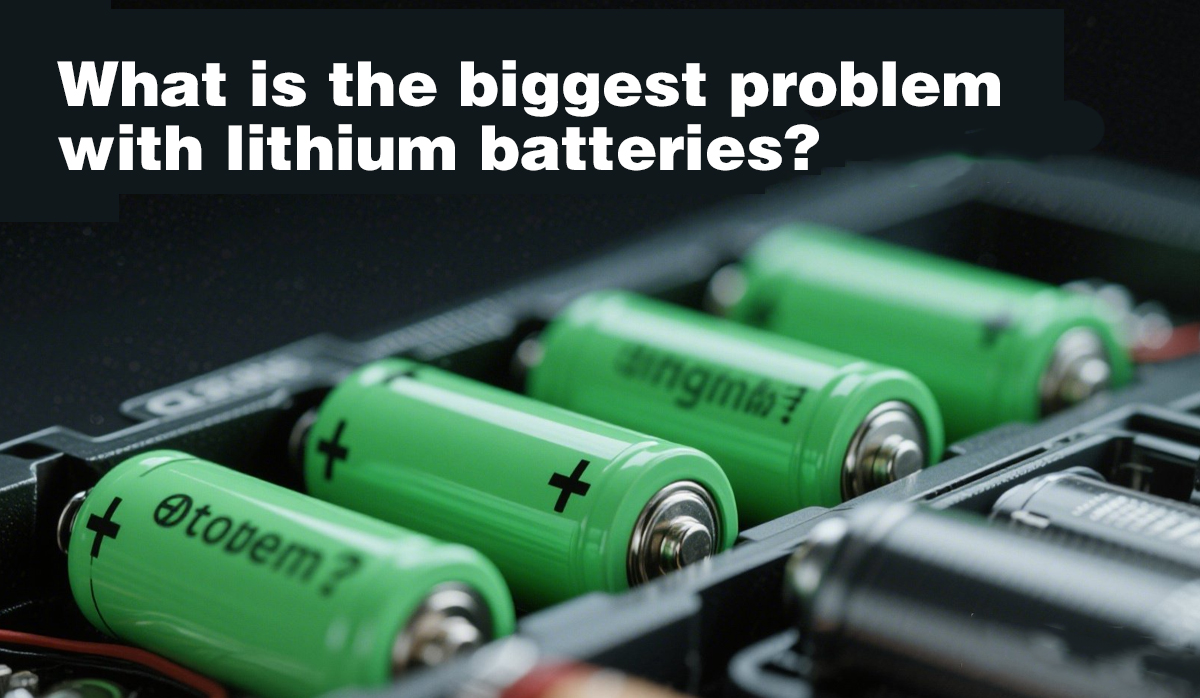¿Cuál es el mayor problema con las baterías de litio?? Una mirada en profundidad a las soluciones apiladas de batería de litio de 48V 100Ah
1. Introducción

Lithium-ion batteries have become the cornerstone of modern energy storage systems, powering everything from smartphones to solar energy installations. Despite their high energy density and efficiency, concerns about safety and longevity still pose significant challenges. A frequently asked question is: "What is the biggest problem with lithium batteries?" En este articulo, we delve into the safety challenges and performance issues commonly associated with lithium-ion batteries, with a special focus on 48V 100Ah lithium battery Stacked sistemas. We will explain why adopting a modular, stackable approach can help alleviate some of these issues while providing enhanced scalability and reliability for solar applications.
En GYCX Solar, we understand that long-term energy security depends on both efficiency and safety. This article will guide you through common pitfalls in lithium battery technology and demonstrate how our product solutions are designed to overcome them.
2. Understanding Lithium Battery Safety Challenges

Baterías de iones de litio, though powerful, carry inherent risks. Numerous studies and industry reports highlight several challenges:
- Fugitivo térmico: A phenomenon where the battery experiences uncontrollable temperature increases.
- Material Degradation: Con el tiempo, battery materials break down, reducing performance and capacity.
- Deep Discharge Effects: Repeated deep discharges can shorten a battery’s usable life.
These issues are compounded by environmental factors and usage patterns. Por ejemplo, batteries installed in high-temperature environments or subjected to heavy cycling may degrade faster than expected. Understanding these challenges is essential for designing a system that not only meets energy demands but also offers robust safety features.
3. Fugitivo térmico: The Primary Concern

Thermal runaway is often cited as the most significant risk with lithium-ion batteries. It occurs when the battery’s internal temperature rises uncontrollably, potentially leading to fires or explosions. Several factors contribute to thermal runaway:
- Overcharging or Overheating: Excessive charging or external heat can trigger instability.
- Faulty Battery Management Systems (BMS): Without accurate monitoring, the risk of overheating increases.
- Daño mecánico: Physical impacts or manufacturing defects can cause internal short circuits.
The risk of thermal runaway necessitates rigorous safety standards, proper installation, and effective BMS. Para aplicaciones solares, ensuring that batteries remain within safe operating temperatures is critical to the longevity and reliability of the energy system.
4. Material Degradation and Cycle Life Issues

Another significant challenge is the gradual degradation of battery materials over many charge-discharge cycles. Por un 48V 100Ah lithium battery Stacked sistema, even slight degradation in each cell can reduce the overall efficiency of the battery bank. Key factors include:
- Electrode Wear: Continuous use wears out electrode materials, reduciendo la capacidad.
- Electrolyte Breakdown: Repeated cycling can lead to chemical changes in the electrolyte, affecting performance.
- Cumulative Effect of Deep Discharge: Regularly discharging the battery deeply accelerates deterioration.
Effective battery design and management can mitigate these issues to some degree. Por ejemplo, maintaining an optimal depth of discharge (Departamento de Defensa) and using high-quality materials can extend battery life and ensure that performance remains consistent over many years.
5. Impact of Deep Discharge and DoD on Battery Health
La profundidad de la descarga. (Departamento de Defensa) is crucial in determining the battery’s lifespan. While lithium batteries are designed for deep-cycle use, consistently drawing a high DoD can lead to faster capacity loss. Research shows that using only a portion of the battery’s total capacity (p.ej., 80% of rated capacity) can significantly extend its cycle life compared to full discharges.
Para sistemas de energía solar, which may require daily deep cycling, strategies that limit DoD are vital. Employing intelligent energy management systems that automatically regulate discharge rates can help maintain battery health. This balance between usable capacity and cycle life is a key consideration when choosing an energy storage solution.
6. Why a Modular Approach Can Mitigate Risks
One effective strategy to address the challenges of lithium battery degradation and safety is using a modular, sistema de batería apilable. Instead of relying on one large battery unit, a modular system divides the capacity among several smaller units.
Benefits of a Modular (Apilable) System:
- Escalabilidad: Modular batteries allow you to easily expand the system as your energy needs grow.
- Redundancia: Si un módulo falla, the others can continue operating, which enhances overall reliability.
- Mantenimiento: Smaller units are often easier to monitor, maintain, and replace as needed.
- Improved Thermal Management: Modular design facilitates better heat distribution and easier integration of cooling systems.
En GYCX Solar, nuestro 48V 100Ah lithium battery Stacked systems embody these principles, offering a practical solution that combines flexibility with robust performance.
7. Advantages of a 48V 100Ah Lithium Battery Stacked System
Specifically designed for renewable energy applications, nuestro 48V 100Ah lithium battery Stacked systems deliver multiple advantages:
- Alta densidad de energía: Enables compact installation with substantial energy storage.
- Fiabilidad: Engineered with advanced battery management systems to monitor temperature, Voltaje, and overall health.
- Modularity and Flexibility: The stackable design means you can start with a smaller configuration and expand as needed, providing a tailored solution that scales with your energy needs.
- Enhanced Safety Features: Integrated thermal management and robust cell design help reduce the risk of thermal runaway.
These features make our stackable system particularly well-suited for residential and commercial solar installations where both safety and performance are paramount.
8. Integrando productos solares GYCX en su sistema
A comprehensive solar energy system doesn’t just rely on a single component; it requires harmonious integration of various high-quality products. En GYCX Solar, our product suite is designed to work together seamlessly, ensuring that each component enhances the system’s overall efficiency and safety.
Batería de litio apilable
Nuestro Batería de litio apilable solution is at the heart of a scalable energy storage system. Its modular design allows for flexibility, making it easy to expand your energy storage as your needs evolve.
Bateria solar
For robust energy storage tailored for solar applications, nuestro Bateria solar range is engineered to deliver high efficiency and consistent performance.
inversor solar
Un confiable inversor solar is indispensable for converting DC power stored in batteries into usable AC power. Our inverters are optimized for high efficiency and safety, complementing our battery solutions perfectly.
By combining these components, you build a system that not only meets your current energy needs but is also ready to adapt to future demands.
9. Future Directions in Lithium Battery Safety

As research continues, several promising developments aim to address the core challenges of lithium-ion battery safety:
Advanced Materials and Cell Designs
New electrode materials and improved electrolyte formulations are being developed to enhance battery performance and reduce the risk of degradation.
Enhanced Battery Management Systems (BMS)
Modern BMS technologies provide real-time monitoring and predictive maintenance, effectively reducing risks associated with deep discharges, sobrecargar, and thermal runaway.
Alternative Chemistries
Emerging battery chemistries, such as solid-state and sodium-ion technologies, offer potential paths to overcoming the limitations of conventional lithium-ion systems, though they are still in the development stages for many applications.
Integration with Smart Grids
As smart grid technologies evolve, batteries will increasingly be integrated with IoT sensors and AI-driven management systems. This integration promises to optimize charging cycles, minimize energy losses, and extend battery life further.
The continuous evolution in battery technology promises safer, more efficient energy storage options in the near future.
10. Conclusión
Lithium-ion batteries have revolutionized the way we store and use energy, yet challenges related to safety—especially issues like thermal runaway and material degradation—remain critical. Para sistemas de energía solar, particularly those using 48V 100Ah lithium battery Stacked soluciones, understanding and mitigating these risks is essential. By employing a modular, stackable design, you can gain flexibility, enhanced safety, y escalabilidad, ensuring your system remains efficient and reliable over time.
En GYCX Solar, our integrated approach combines our Batería de litio apilable, Bateria solar, y inversor solar products to deliver a robust and adaptable energy storage system. Embrace the benefits of advanced battery management and modular design to create a sustainable, seguro, and future-proof solar energy setup.
